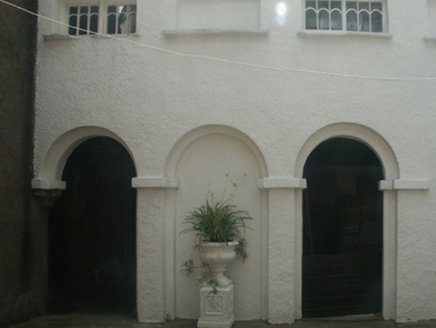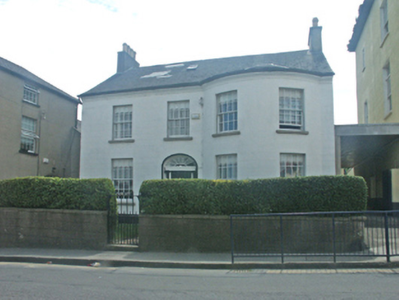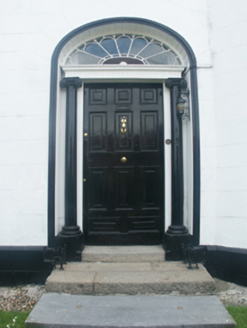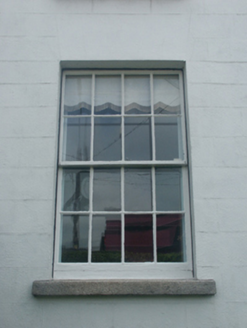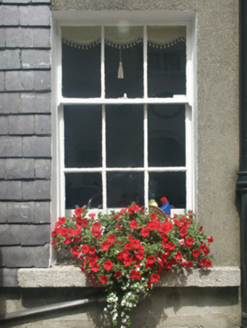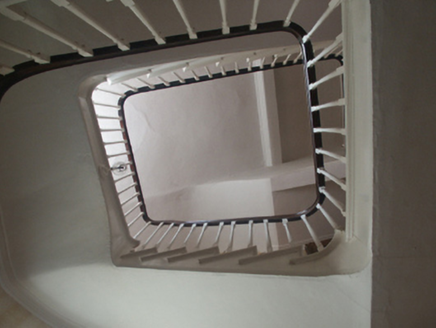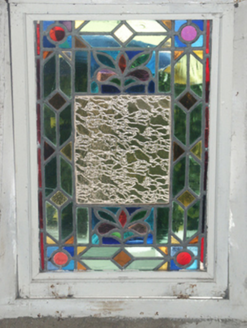Survey Data
Reg No
15500042
Rating
Regional
Categories of Special Interest
Architectural, Artistic, Historical, Social
Previous Name
Slaney View
Original Use
House
In Use As
House
Date
1800 - 1840
Coordinates
304525, 122205
Date Recorded
23/06/2005
Date Updated
--/--/--
Description
Detached three- or four-bay two-storey house with dormer attic, extant 1840, on a T-shaped plan with single-bay (single-bay deep) two-storey lower central return (south). Reroofed, ----. Replacement pitched artificial slate roof on a T-shaped plan centred on pitched artificial slate roof (south), clay ridge tiles, rendered chimney stacks having cut-granite capping supporting terracotta or yellow terracotta octagonal pots, central rooflight to front (north) pitch, and uPVC rainwater goods on rendered "Cavetto" cornice. Rendered, ruled and lined walls on rendered chamfered plinth; slate hung surface finish to side (east) elevation. Segmental-headed central door opening with cut-granite step supporting wrought iron-detailed cast-iron bootscrapers, doorcase with engaged Ionic colonettes on plinths supporting "Cyma Recta"- or "Cyma Reversa"-detailed cornice on rosette-detailed fluted frieze, and moulded rendered surround framing timber panelled door having fanlight. Square-headed (east) or paired square-headed (west) window openings with cut-granite sills, and concealed dressings framing eight-over-eight timber sash windows without horns. Interior including (ground floor): central hall retaining carved timber surrounds to door openings framing timber panelled doors; and carved timber surrounds to door openings to remainder framing timber panelled doors with carved timber surrounds to window openings framing timber panelled shutters. Set back from line of street with rendered, ruled and lined boundary wall to perimeter having cut-granite "saddleback" coping supporting wrought iron railings centred on wrought iron gate.
Appraisal
A house representing an important component of the early nineteenth-century domestic built heritage of Wexford with the architectural value of the composition, one renamed by Edward McQuillan (d. 1941) of the Clan McQuillan of Dunluce Castle (Kehoe 1985, 4), confirmed by such attributes as the compact plan form centred on a Classically-detailed doorcase not only demonstrating good quality workmanship, but also showing a simplified "peacock tail" fanlight; and the diminishing in scale of the openings on each floor producing a graduated visual impression with the principal "apartments" defined by an elegant bow. Having been well maintained, the elementary form and massing survive intact together with substantial quantities of the original fabric, both to the exterior and to the interior, including crown or cylinder glazing panels in hornless sash frames: meanwhile, contemporary joinery; restrained chimneypieces; and sleek plasterwork refinements, all highlight the artistic potential of a house having historic connections with the Perceval family including Sarah Perceval (d. 1880) 'late of Slaney View Wexford County Wexford' (Calendars of Wills and Administrations 1880, 596); and her daughters Sarah Perceval (d. 1891) and Anne Perceval (d. 1901) 'formerly of Slaney-view Wexford [and] late of 7 Glena-terrace Wexford' (Calendars of Wills and Administrations 1891, 638; 1901, 396).
